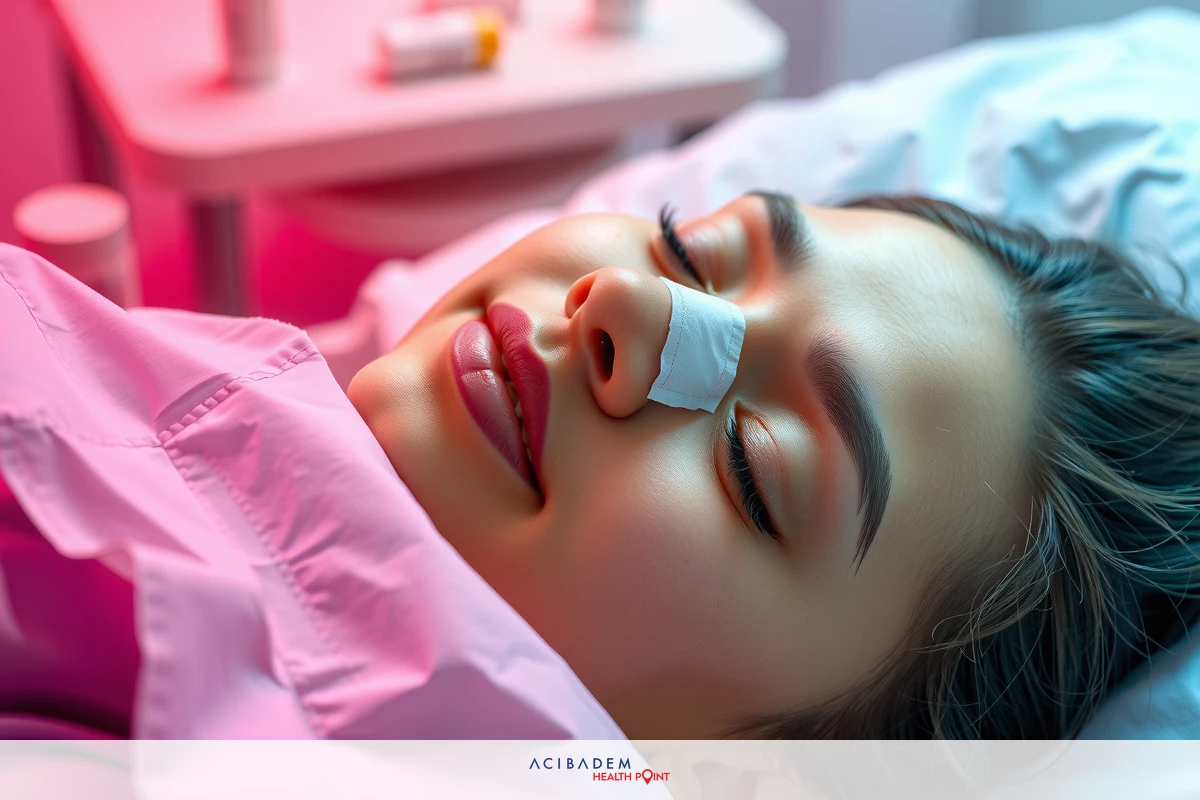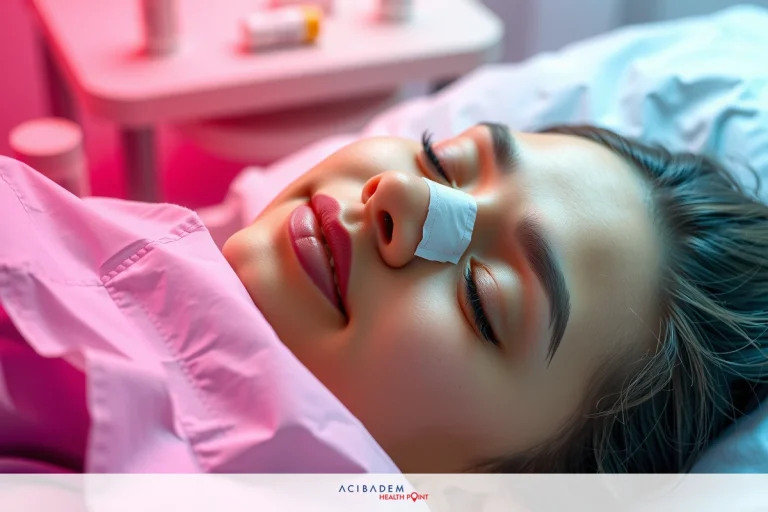When is Nasal Packing Used in Rhinoplasty?
When is Nasal Packing Used in Rhinoplasty? The rhinoplasty journey, from decision-making to recovery, encompasses a diverse array of steps and stages. One such stage that often piques curiosity is the use of nasal packing. This process might sound perplexing, but its role in successful postoperative outcomes is undeniable.
Nasal packing serves as an instrumental part of rhinoplasty endeavours – it aids in managing bleeding and reducing swelling. Its benefits extend beyond just these; it also contributes to stable healing by offering the necessary support structure during the critical initial days after surgery. Postoperative care becomes pivotal when nasal packings are involved due to their direct impact on patient comfort and recovery trajectory.
As we navigate through this article’s content, you’ll unravel more about why nasal packing holds such a crucial place within the sphere of rhinoplasty surgeries. Unfolding next are insights into its purpose, advantages, and how patients can ensure optimal post-rhinoplasty care when dealing with nasal packings.
Purpose of Nasal Packing
In the realm of rhinoplasty, nasal packing serves as an essential tool with multiple functions. Its primary role is to provide support to the newly reshaped nasal structure during the critical initial recovery phase post surgery. This supportive mechanism helps maintain surgical corrections and promotes proper healing.
Another significant purpose of nasal packing in rhinoplasty stems from its ability to manage potential bleeding situations. During a rhinoplasty surgery, minute blood vessels are inevitably affected; this can cause some level of bleeding or oozing postoperatively. Nasal packings come into play here by acting as a dam against such bleedings, thus safeguarding patients from heavy blood loss complications.
Additionally, nasal congestion is often experienced after undergoing nose surgeries like rhinoplasty due to swelling and inflammation within the nasal passages. The presence of a well-placed nasal packing aids in controlling this swelling by applying gentle pressure on these inflamed areas internally, thereby alleviating congestion-related discomforts for patients significantly.
Let’s not overlook how instrumental they have proven in warding off infections too! By creating a sterile barrier between your sensitive inner nose tissues and external environment laden with potential pathogens, it considerably lowers infection risks – another noteworthy reason why they’re widely employed across rhinoplasty procedures globally.
Ultimately though, whether or not to use them depends on various factors inclusive but not limited to individual patient requirements and specific surgical techniques adopted by surgeons – each aiming at ensuring optimal recovery outcomes for their patients.
Benefits of Nasal Packing
The use of nasal packing in rhinoplasty extends beyond its immediate postoperative role. Delving into the broader perspective, it becomes apparent that this seemingly simple tool carries a plethora of benefits contributing to smoother recovery journeys for patients.
One remarkable benefit is its contribution to minimizing bleeding during the sensitive recovery phase. By acting as an internal barrier, nasal packing helps prevent unnecessary blood loss by exerting pressure at potential bleeding points inside the nose. This not only ensures patient safety but also provides reassurance and peace of mind during their recuperation time.
Reduced Swelling: The consistent gentle pressure applied by nasal packings aids significantly in controlling

swelling within the nostrils after surgery. Less swelling translates into less discomfort and quicker return to normalcy.
Stabilized Healing: By maintaining structural integrity post-rhinoplasty, packings provide much needed support for newly reshaped tissues aiding their healing process.
Lower Infection Risks: As they act as a sterile barrier protecting inner delicate structures from external pathogens, the risk of post-surgery infections gets considerably reduced with their usage. Enhanced Comfort During Recovery: Despite initial discomforts associated with their presence, once removed – usually done within a week or two – patients often report feeling immense relief knowing how instrumental they have been in ensuring proper healing.
In essence, these multifaceted advantages make nasal packing an indispensable part of many rhinoplasty procedures – all aimed at fostering optimal surgical outcomes and promoting faster recoveries for patients navigating through their rhinoplasty journey.
Postoperative Care
The journey following a rhinoplasty surgery doesn’t end in the operating room; it extends into the postoperative phase, where care routines play a pivotal role. With nasal packings being an integral part of many rhinoplasties, understanding how to navigate through their presence during recovery can significantly enhance patient comfort and overall healing outcomes.
In terms of hygiene, maintaining cleanliness around the nostril area becomes crucial when dealing with nasal packings. This involves gentle cleaning using prescribed saline solutions or sprays that aid in keeping the packing and surrounding areas clean without disturbing its position. It’s essential not to attempt removing any crusts or blood clots adhered to them physically as it could lead to unnecessary complications like premature dislodgement or bleeding incidents.
Managing discomfort associated with these packings forms another significant aspect of postoperative care. While some level of initial discomfort can be expected due to their foreign body nature within your nose, consistent pain should never be ignored – conveying such occurrences promptly to healthcare providers ensures timely interventions and possible adjustments if required for your comfort.
Lastly comes the removal process – usually scheduled after a week or two post-surgery based on individual healing progresses under professional supervision ensuring safe extraction without causing undue stress on delicate healing tissues inside. The removal procedure might cause brief discomfort but ultimately results in noticeable relief from previous congestion feelings and easier breathing experiences for patients.
Navigating through this phase armed with appropriate knowledge paves way towards uneventful recoveries while making sure that all benefits offered by nasal packing are effectively harnessed towards achieving desired surgical outcomes.
Frequently Asked Questions
What is the main purpose of nasal packing in rhinoplasty?
The primary role of nasal packing in rhinoplasty involves providing support to the newly reshaped nose structure during the early recovery phase. It also helps manage bleeding, control swelling and reduce infection risks.
How long does a nasal packing stay after a rhinoplasty procedure?
The duration varies based on individual healing progress; however, it's generally removed within one to two weeks post-surgery under professional supervision.
Is there discomfort associated with having a nasal packing?
Some initial discomfort due to its foreign body nature inside your nose can be expected. However, any persistent pain should be promptly communicated with healthcare providers for timely interventions and adjustments if required for your comfort.
Are there ways to alleviate discomfort caused by nasal packings during my recovery journey?
Yes, following prescribed postoperative care routines like maintaining hygiene around nostrils using saline solutions or sprays can help. Pain management medications as advised by healthcare professionals also aid in controlling discomfort levels effectively.











